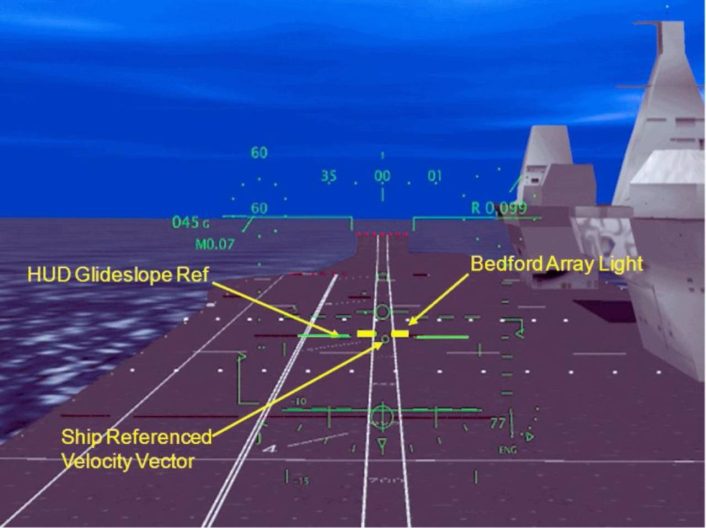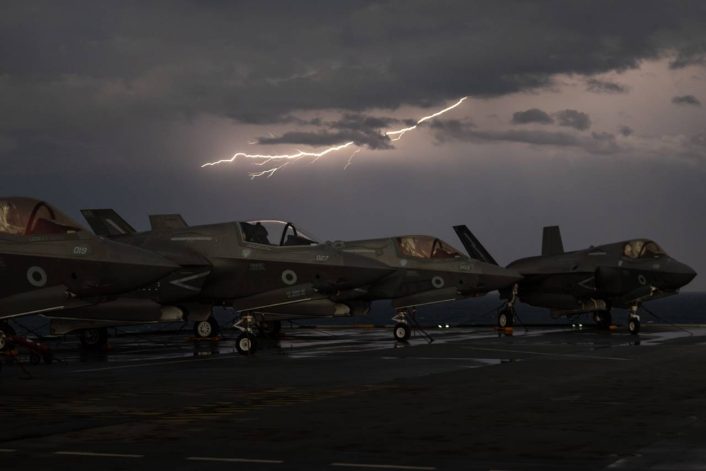Following reports about the cancellation of a landing aid for the SRVL technique on HMS Queen Elizabeth, a Govt minister has clarified that, though timelines have shifted, rolling landings are still planned.
In early November, the UK’s Ministry of Defence (MoD) released its 2024/2025 Annual Report and Accounts. Among the 256 pages, one table lists all of the individual losses valued at over £300,000 made through the year. Included is the tragic loss of a Merlin HC4 in September 2024, resulting in the death of a Royal Navy pilot, as well as the writing off of a Litening targeting pod which detached from a Typhoon mid-flight over East Yorkshire in January 2025.
Various retirements of capabilities are listed as constructive losses – namely the withdrawal of HMS Albion and HMS Bulwark, the planned retirement of the Watchkeeper UAV, and the depletion of the British Army’s AS90 fleet of self-propelled guns which have now been sent to Ukraine. A large number of items are referred to only by their project names – Project RARDEN, for example, oversaw ongoing support for the 30mm RARDEN cannon, and has now been wound down due to the withdrawal of the Scimitar armored vehicle which carried it. Some projects, like Project B STAR (valued at £3.8m), remain undefined and the Government declined to reveal any further information.
Concluding the list of constructive losses is the item “Rolling Vertical Landing upgrade cancellation”, representing a loss to the MoD of just over £300,000 – just enough to qualify to even be listed. This line quickly sparked panic. At first glance, the obvious conclusion would be that the MoD had scrapped one of its flagship aircraft carrier capabilities – a hybrid vertical/conventional carrier landing technique, called Shipborne Rolling Vertical Landing (SRVL), tailored for the F-35B, allowing a return to the ship with a much higher payload than a vertical landing would permit.
An F-35B from the Integrated Test Force performed the first SRVL on HMS Queen Elizabeth in October 2018, though at this stage this was still a demonstration as a proof of concept. In service, the two Queen Elizabeth class carriers would be fitted with a specially designed landing aid system called the Bedford Array. The Royal Navy’s second aircraft carrier, HMS Prince of Wales, was delivered with its Bedford Array installed, however HMS Queen Elizabeth was instead due to receive the system during a refit that is currently in progress. It was quickly deduced that the £300,000 loss meant this installation would seemingly not go ahead as planned.

Mainstream news outlets picked up the story quickly, leading with the claim that British F-35s would now need to dump their weapons before returning to their aircraft carrier. Within days, a written question was submitted to the MoD by the official opposition’s Shadow Secretary of State for Defence, James Cartlidge MP. Due to the number of questions submitted to each Government minister on a daily basis, it is not unusual to wait a number of weeks for a response. This response was finally forthcoming on Nov. 25, where defence minister Luke Pollard MP immediately clarified “Shipborne Rolling Vertical Landing (SRVL) for the UK’s F-35B Lightning aircraft to Queen Elizabeth Class carriers has not been cancelled”.
Pollard, responding on behalf of the MoD, said that the delivery of SRVL “has been re-profiled as a Defence Choice so that fitting the capability aligns with the introduction of a related complex weapons programme” and that this change “is not expected to have an adverse impact on overall Carrier Strike or F-35B capability”.
Effectively, this means that the Bedford Array – or a subsequent development of it – is still planned to eventually make its way to HMS Queen Elizabeth, but the installation has been delayed. This might seem to be a clear example of cost cutting at the expense of capability, however it should be noted that the UK’s carrier strike concept is currently in a state of rapid change. Newly appointed First Sea Lord General Sir Gwyn Jenkins has said outright that he would like to see unmanned collaborative combat aircraft (CCAs) deployed from the aircraft carriers during the next planned deployment to the Indo-Pacific in 2029. He also revealed plans for a prototype CCA to be launched from one of the carriers by the end of 2026.
The Royal Navy has made their opening foray into a hybrid Carrier air wing (hybrid meaning a mix of crewed and un-crewed platforms). Project VANQUISH seeks a technical demonstrator by the end of 2026. This is an evolution of the previous and more ambitious Project VIXEN👇 🧵1/5 pic.twitter.com/1c2jcwNUHc
— Greg Bagwell (@gregbagwell) October 5, 2025
Beyond the Headlines
Despite the catchy headlines, F-35Bs can still return to the Queen Elizabeth carriers using traditional vertical landings while carrying a fairly sizable payload. During development, a requirement was set for the F-35B to be able to safely return to a ship and land vertically while still carrying a combined weapons and fuel load of up to 5,000 lbs. This figure is the limitation that must be adhered to by the U.S. Marine Corps’ F-35Bs, which operate from ships not designed for safe SRVL operations. Additionally, due to the lack of a ski-jump ramp, U.S. Marine Corps F-35Bs are restricted to a lower launch payload than F-35Bs launching from the Queen Elizabeth class.
Though, understandably, a much criticized fact about the current capabilities of the UK’s F-35 fleet, the larger, heavier, and expensive strike weapons that SRVL was primarily envisioned to ensure could be returned safely to the ship if necessary are not presently operational.

Instead, the UK’s F-35s carry just the Paveway IV guided bomb – based on the 500 lb Mark 82 round – for air to surface strike. Contrary to a widely shared social media post made by Ben Obese-Jecty MP, a member of the opposition, the F-35Bs are able to carry the AIM-120 AMRAAM radar guided missile and therefore do not lack a beyond visual range (BVR) anti-air capability. In the future, the AMRAAM is intended to be supplanted by the MBDA Meteor. The UK uses AIM-132 ASRAAM infrared guided missiles in place of the more ubiquitous AIM-9 Sidewinder – both of these weapons are carried externally on the F-35.
Installing the Bedford Array now, while the future configuration and air wing of the Queen Elizabeth class is a matter of debate, could mean that further down the line even more money must be spent on removing the system and replacing it with a different one. Alternatively, depending on how quickly CCAs are developed into frontline, operational platforms, the requirement for the UK’s F-35Bs to launch from the carriers with huge payloads might become much rarer. Instead, these additional weapons could be carried by unmanned ‘loyal wingmen’.









